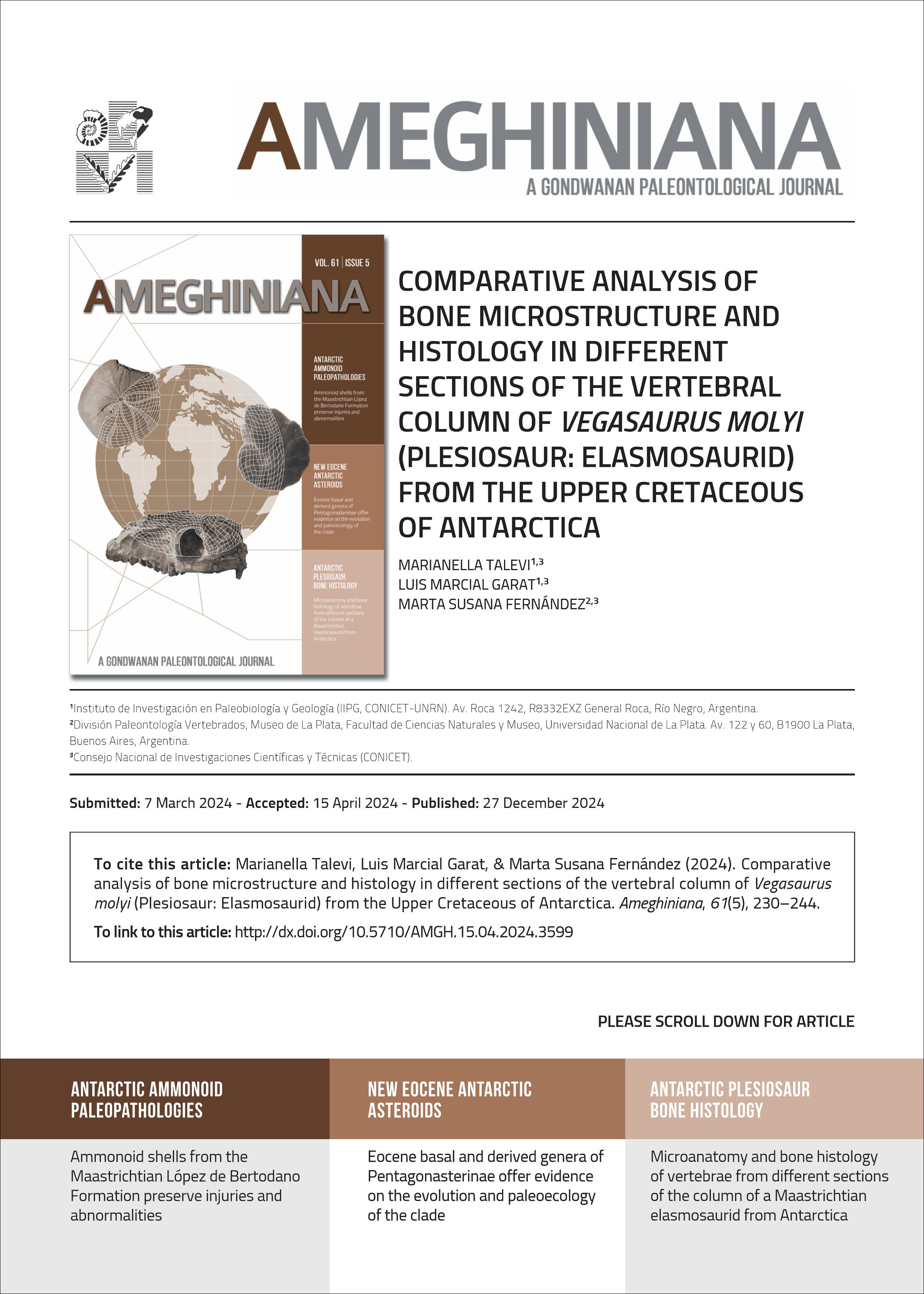COMPARATIVE ANALYSIS OF BONE MICROSTRUCTURE AND HISTOLOGY IN DIFFERENT SECTIONS OF THE VERTEBRAL COLUMN OF VEGASAURUS MOLYI (PLESIOSAUR: ELASMOSAURID) FROM THE UPPER CRETACEOUS OF ANTARCTICA
DOI:
https://doi.org/10.5710/AMGH.15.04.2024.3599Keywords:
paleohistology, plesiosaur, Maastrichtian, AntarcticaAbstract
Elasmosaurids were the most diverse forms of plesiosaurs during the Late Cretaceous and achieved a cosmopolitan distribution. Thus, its fossils have been recorded on all continents including Antarctica. Knowledge of paleobiological and evolutionary aspects of plesiosaurs has advanced considerably in recent years, including microstructural and paleohistological analyses of bone tissue. However, comparative analyses are still relatively scarce. To analyse how the degree of remodelling varies in the vertebral column of Vegasaurus molyi (MLP 93-I-5-1), from the Upper Cretaceous of Antarctica, histological sections of four vertebrae representing different sections of the column were made. The sections present a high degree of remodelling and an external fundamental system, indicating that the individual has reached skeletal maturity. The caudal vertebra shows the least degree of remodelling and retains the greatest number of lines of arrested growth. The results indicate that the degree of bone remodelling increases from the caudal region to the cervical region. When considering the middle sections of the vertebral elements, there is an increase in the compaction index from the cervical region to the caudal region. These differences in the bone microstructure are perceptible and serve as a criterion for determining which element of the vertebral column and in which part of its thin sections should be created. This will yield more information at the paleohistological level, allowing paleobiological inferences such as ontogenetic stage, differential growth of various parts of the skeleton, and blood supply, among other factors.

Additional Files
Published
Issue
Section
License
Authors publishing in Ameghiniana have the option of making their article freely available online. Authors opting for the Open Access must pay a fee of $300 (US dollars) to cover article-processing costs and to ensure the article is made open access. Please contact the Production Team after the acceptance of your manuscript if you are interested in making your article Open Access. This option implies by default a license Creative Commons Attribution Non-Commercial-NoDerivs License (CC BY NC ND). If your funding institution requires a different licensing option please communicate this to the Production Team after the acceptance of your manusctipt.










